March Prospective Plantings Report: Corn Below, Soybeans Even with Expectations
Author
Published
3/29/2024
Introduction
The USDA released estimates of grain stocks and prospective plantings on March 28, 2024.
The USDA reported a bigger decrease in corn acres compared to what the market was expecting and an increase in soybean acres in line with market expectations. Compared to the previous year, market expectations headed into the reports showed analysts expected a modest decrease in corn acres and a small increase in soybean acres. The March Prospective Plantings Report shows a larger decrease in corn acreage than expected, down 4.61 million acres (5%) from 2023. Soybean acres are up 3 percent from last year. USDA grain stocks estimates for corn and soybeans were both mostly in line with market expectations. Corn stocks were slightly below expectations with an estimated 8.35 billion bushels, while soybean stocks were slightly above expectations at 1.85 billion bushels.
Table 1. March 2024 US Acreage & Grain Stocks
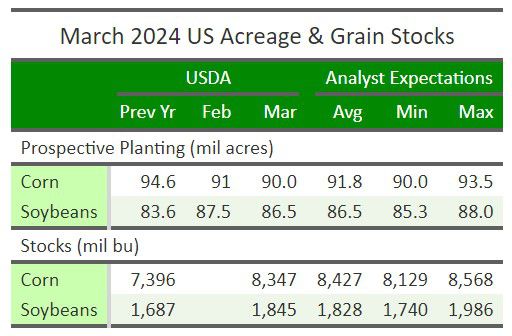
State Level Acreage Changes
With corn acres decreasing and soybean acres increasing, there are not a lot of differences between states. For the most part most major corn and soybean states lost corn and gained soybeans.
Figure 1 shows the change in intended corn acres compared to actual corn acres planted in the previous year for all states in the continental US. Only 4 states saw increases to corn acres: Colorado, Oklahoma, Washington, and Pennsylvania. Nearly every major corn-producing state saw a relatively large reduction in corn acres. Minnesota has 700,000 fewer acres compared to last year, while South Dakota, Iowa, and Illinois each have 300,000 fewer acres.
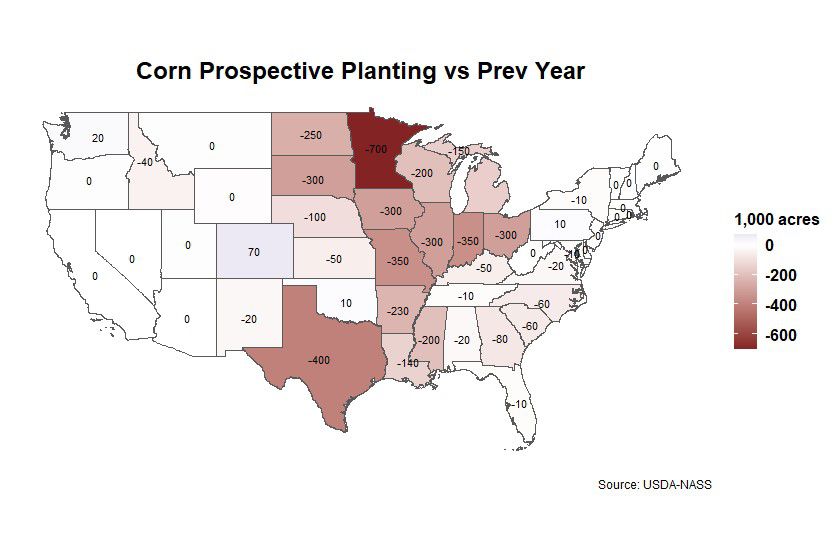
Figure 1. Corn Prospective Planting vs Previous Year
Figure 2 shows the change in intended soybean acres from soybeans planted in 2023 for states with significant soybean production. Of the states shown, 4 states have a decrease in soybean acres, 4 more states are unchanged, and the remaining states saw an increase in soybean acres. North Dakota is showing the largest increase in intended soybean planting compared to 2024 with 700,000 acres, followed by Missouri with 400,000 acres. Iowa, Indiana, and Ohio all show an increase of 250,000 acres.
Figure 2. Soybean Prospective vs Previous Year
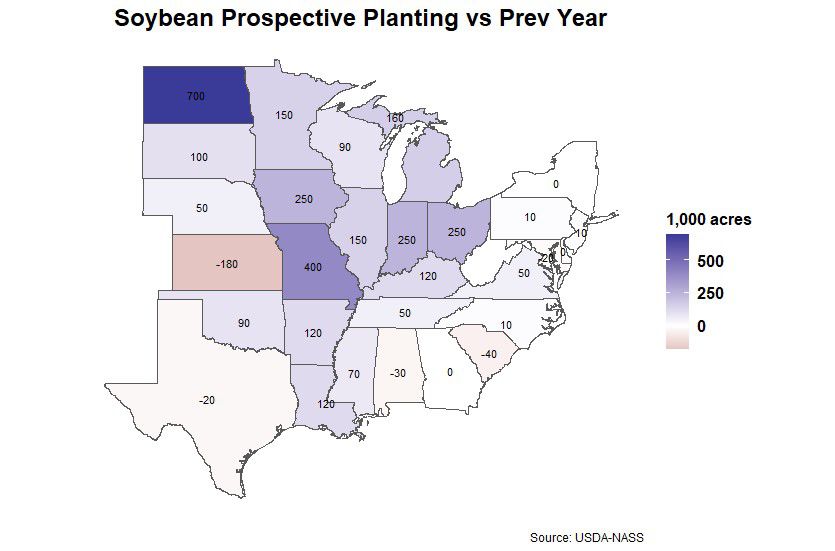
Grain Stocks by State
Total stocks were up compared to the previous year for both corn and soybeans. Table 2 and Table 3 are USDA tables outlining stocks on-farm vs. off-farm for corn and soybean respectively. On-farm corn stocks were higher across the US than the same time last year and were the driver behind the increase in total stocks. All 5 of the top states had an increase in on-farm corn stocks. Off-farm corn stocks levels are down slightly nationally and in Illinois, Iowa, and Indiana, but off-farm stocks are up in Nebraska and Minnesota.
Changes in soybean stocks were similar to those of corn stocks. Total and on-farm soybean stocks were up compared to the previous year, while off-farm stocks were down. Of major soybean states, Illinois and Nebraska had significantly more stocks on farm this year compared to last year. Iowa, Illinois and Indiana all had less soybeans stored off-farm.
Table 2. March 2024 Corn Stocks Breakdown for US and Top 5 States
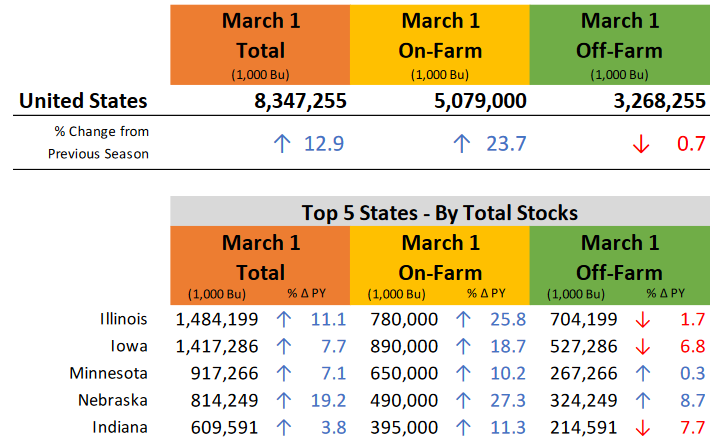
Table 3. March 2024 Soybean Stocks Breakdown for US and Top 5 States
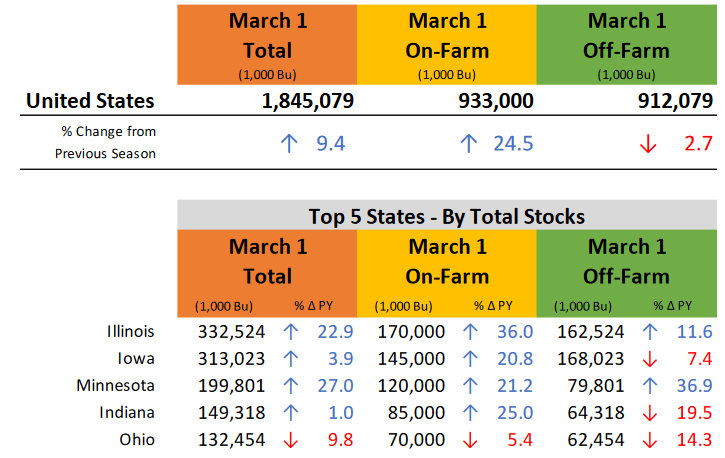
Take Away/Market Reaction
The USDA acreage report was somewhat of a surprise to the market. Soybean acres were in line with expectations, but corn acres were below expectations. Additionally, the pre-report expectations were that the upper Midwest would actually increase corn acreage, so the large drop in Minnesota and the Dakotas was a significant shock to market participants. The initial market response was around 15-20 cents of gain for corn futures and prices remaining mostly flat for soybean futures. Corn closed 15 cents higher and soybeans 1 cent lower by the end of the day. The acreage report will create the setting for a longer-term bullish story for corn unless actual plantings far exceed intentions.
Stocks were lower than expected for corn and higher than expected for soybeans, but both fell well within market analysts’ range of expectations. This news may increase the bullish story for corn, though stocks levels for both corn and soybeans are significantly higher than at this time last year. The March Prospective Plantings Report sets the new level of expectations for corn and soybean production as farmers prepare to start planting over the next several weeks.
Want more news on this topic? Farm Bureau members may subscribe for a free email news service, featuring the farm and rural topics that interest them most!